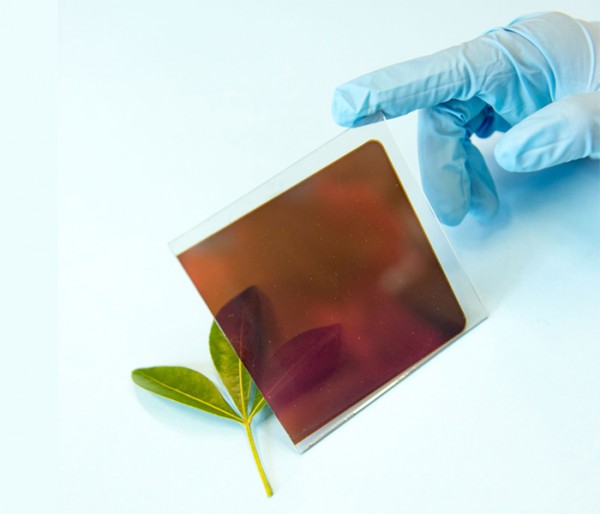forum
library
tutorial
contact

A Flat-Out Major Advance for an
Emerging Solar Cell Technology
Jon CartwrightScience Magazine, September 11, 2013
|
the film forum library tutorial contact |

|
A Flat-Out Major Advance for an
Jon Cartwright |
 A promising solar cell material can be manufactured using the same method as the cheapest silicon devices, without sacrificing energy-production efficiency. The advance boosts the chances that the cheap material could be adopted by existing industry.
A promising solar cell material can be manufactured using the same method as the cheapest silicon devices, without sacrificing energy-production efficiency. The advance boosts the chances that the cheap material could be adopted by existing industry.
A solar cell converts sunlight into electricity. A typical cell contains layers of materials known as semiconductors -- most often silicon. When a particle of light, or photon, strikes an atom in one of these semiconductors, it knocks free a negative electron that can scoot through the material and leaves behind a positively charged "hole" that can also move about. The electrons and holes travel in opposite directions, through layers of semiconductors with different properties, to create a flow of current.
It sounds easy enough, yet most solar cells, which are based on cheaply manufactured silicon, cannot convert much more than 10% of sunlight into electricity. Although other semiconductors such as gallium arsenide can reach efficiencies above 30%, they are prohibitively expensive for all but the most demanding applications, such as powering satellites.
A cheaper alternative might be materials known as perovskites, compounds such as calcium titanium oxide in which the atoms arrange themselves in a particular mix of cube and diamond shapes. Perovskites can be easily tuned to absorb sunlight. In fact, perovskite's first role in a solar cell in 2009 was to absorb photons and no more. Adjacent semiconductors separated the liberated electrons and holes.
That's because physicists assumed that the electrons and holes liberated within perovskite would not travel very far. In fact, to make sure these charges made it to the adjacent semiconductors, the physicists mixed up all the components into a complex nanostructure -- in which tiny, interconnected bubbles of semiconductor were coated with a thin layer of perovskite and then a thicker layer of more semiconductor.
Last year saw a breakthrough for perovskite cells, however, when physicist Henry Snaith at the University of Oxford in the United Kingdom and colleagues discovered that the devices actually worked better if they replaced the semiconducting bubbles with an insulating scaffold. The perovskite, as it turned out, was a pretty good semiconductor, and could shift electrons efficiently by itself.
Now, Snaith and colleagues have delivered another surprise: The bubblelike nanostructure is completely irrelevant. The Oxford team has demonstrated that perovskite cells are just as efficient if they are constructed in the same flat design, and using the same method -- known as vapor deposition -- as cheap thin-film silicon cells. "Having started with a complicated nanostructure, we've reduced it to a thin film," Snaith says. "It's amusing, I agree!"
What's more, the simple layered cell converts more than 15% of sunlight to electricity -- equal to the record for perovskite cells, set just 2 months ago for a nanostructured device -- as the researchers report today in Nature. Had physicists known perovskite was a good semiconductor, they probably would have started off with a regular, thin-film cell, Snaith says. Perovskite cells now have a greater chance of hitting the mainstream market -- possibly for as little as $0.15 per watt, or one-quarter the price of thin-film silicon devices, Snaith says.
"Henry's paper is certainly an important piece of work," says Michael Grätzel, a physicist at the Swiss Federal Institute of Technology in Lausanne and a member of the team who set the record for efficiency in perovskite. However, David Carroll, a physicist at Wake Forest University in Winston-Salem, North Carolina, notes that some perovskites have been shown to degrade on continued exposure to ultraviolet sunlight. Also, the materials need to be demonstrated as nontoxic when industrially processed, he says. Still, Carroll says, "this will propel many research groups to begin looking more carefully at [perovskite] systems."
learn more on topics covered in the film
see the video
read the script
learn the songs
discussion forum
